Apple iPhone 6s Plus
Introduction
The big question for the big one. Even more iPhone goodness in a single package or a phone for the fence-sitters? To loosely quote Apple itself, bigger isn't necessarily better. So, a niche product or the real deal?The iPhone 6s Plus is a second generation phablet - a breed, which Apple long refused to be associated with. It's an S-model too meaning last season's design and changes mostly under the hood.
The push for ease of use has brought about 3D touch - literally adding a sense of depth to your interaction with the smartphone. And the device's response comes from an all new Taptic engine for unrivaled feedback precision.
It is the former that accounts for the most dramatic changes the 6s Plus brings physically. The hair's breadth increase in dimensions you won't notice, but the added weight is immediately felt. And while the 4.7-inch iPhone 6s is still manageable despite the extra heft, the Plus is pushing the boundaries of portability.
Part of the growing up process is the new camera. Apple is finally catching up with the times and now offers 12MP stills, complete with 4K video recording - the iPhone is no longer the favorite target of mockery from supercharged Android flagships. Double the RAM and a new, more powerful A9 chip round up the list of changes that Apple delivered.
Key features
- Metal unibody, 7.3mm slim, 192g of weight
- LTE connectivity (Cat. 6, 300Mbps downlink)
- 5.5" 16M-color LED-backlit IPS LCD of 1,080 x 1,920px resolution, 401ppi
- 3D Touch technology recognizes force, brand new Taptic engine for better feedback
- Ion-strengthened glass, oleophobic fingerprint-resistant coating
- Dual-core 1.8 GHz Twister 64-bit CPU, PowerVR GT7600 GPU, 2GB of RAM, Apple A9 SoC
- Apple iOS 9
- 12MP F/2.2 camera with optical image stabilization, True tone LED flash, phase detection auto focus, 2160p@30fps, 1080p@30fps, @60fps and @120fps video recording, 720p video recording @120fps and 240fps
- 5MP F/2.2 front-facing camera with BSI sensor and HDR mode, 1080p@30fps video
- Comes with 16, 64, and 128GB of built-in storage
- Second-gen Touch ID fingerprint sensor built into the Home button
- Barometer sensor for tracking elevation
- 2,750mAh battery
Main disadvantages
- Heavy
- No microSD slot
- Pricey memory upgrades, 32GB version should be standard for such an expensive phone
- No user-replaceable battery
- Protruding camera lens makes the phone wobble if you don't have a case on
- NFC functionality limited to Apple Pay
- No wireless charging, an infrared port, or FM radio
- • Mediocre screen-to-body ratio
And no, this new one isn't radically different. It's not meant to single-handedly herd compact phone users into the phablet camp. However, with public opinion now even in the iOS world gradually warming up to the idea, don't be surprised if the sales numbers of the two iPhone sizes keep converging.
But let's not get ahead of ourselves and leave these figures to the accountants. We'll stick to the review at hand, starting off with the unboxing and hardware overview.
Beautiful FullHD 5.5-incher
The Apple iPhone 6s Plus has a 5.5-inch IPS LCD display with 1,080x1,920 pixels resolution for a 401ppi density - well above Retina.Our microscope shot brings no surprises and reveals a standard RGB matrix with an equal number of red, green and blue pixels.
 The iPhone 6s Plus has an even brighter display than the iPhone 6s
but due to the slightly brighter blacks, the contrast ratio on both
devices is quite similar 1382:1 for the iPhone 6s Plus vs. 1481:1 for
the iPhone 6s. The screen is not as bright at its maximum setting as the
iPhone 6 Plus but the contrast ratio is about the same as the blacks
are deeper in comparison.
The iPhone 6s Plus has an even brighter display than the iPhone 6s
but due to the slightly brighter blacks, the contrast ratio on both
devices is quite similar 1382:1 for the iPhone 6s Plus vs. 1481:1 for
the iPhone 6s. The screen is not as bright at its maximum setting as the
iPhone 6 Plus but the contrast ratio is about the same as the blacks
are deeper in comparison.| Display test | 50% brightness | 100% brightness | ||||
| Black, cd/m2 | White, cd/m2 | Black, cd/m2 | White, cd/m2 | |||
| 0.10 | 148 | 1542 | 0.36 | 536 | 1481 | |
| 0.10 | 150 | 1563 | 0.43 | 590 | 1382 | |
| 0.17 | 207 | 1230 | 0.61 | 740 | 1213 | |
| 0.17 | 208 | 1197 | 0.52 | 705 | 1361 | |
| 0.00 | 183 | ∞ | - | 439 | ∞ | |
| - | - | - | - | 620 | - | |
| 0.00 | 172 | ∞ | - | 410 | ∞ | |
| - | - | - | - | 540 | - | |
| 0.09 | 108 | 1240 | 0.43 | 532 | 1238 | |
| - | - | - | 0.68 | 789 | 1158 | |
| 0.00 | 169 | ∞ | 0.00 | 367 | ∞ | |
| 0.00 | - | - | 0.00 | 560 | ∞ | |
| 0.00 | 149 | ∞ | 0.00 | 372 | ∞ | |
| 0.14 | 205 | 1435 | 0.29 | 487 | 1657 | |
| 0.16 | 180 | 1139 | 0.30 | 399 | 1334 | |
Much like with the Apple iPhone 6s, the color rendition of the screen is generally accurate with a pretty low average deltaE of 4.1 (for the primary colors plus black and white), and it's the reds and magentas that show a higher than average deviation. The white is slightly on the cooler bluish side, but nothing major and certainly not noticeable without a reference.
As usual, display colors are a matter of personal taste and perception so if you don't need calibrated color output, you will probably be quite happy with the Apple iPhone 6s Plus screen as it is out-of-the-box.
There's a significant improvement in terms of sunlight legibility compared to the old model. The smaller models, both new and old, are still comfortably ahead. Even so, the iPhone 6s Plus has one of the highest ranking LCD panels in this test.
Sunlight contrast ratio
- Nokia 808 PureView 4.698
- Nokia Lumia 930 3.567
- Apple iPhone 5s 3.565
- Samsung Galaxy S5 3.549
- Nokia Lumia 735 3.547
- Motorola Nexus 6 3.543
- Apple iPhone 6s Plus 3.53
- Alcatel Idol X+ 3.527
- Apple iPhone 5c 3.512
- Samsung Galaxy Alpha 3.509
- Oppo R7 Plus 3.499
- Samsung Galaxy Note 3 Neo 3.487
- Samsung Galaxy mini 2 1.114
Apple iPhone 6s Plus battery life
The battery inside the iPhone 6s Plus has a 2,750mAh capacity, a modest decrease from the 2,915mAh of last year's model. Apple's claim is that the new model will last as long as the old one, and that's as specific as it gets.We're a lot more into precise numbers and subjected the 6s Plus to the usual battery of tests and it actually performed better than the old Plus, though with the notable exception of 3G call times. The smartphone would die on us after 16 hours, two thirds of the iPhone 6 Plus' time.
Use the phone with the display on and it scores substantially better. A full 14 hours of video playback is nothing short of exemplary, and means that when the 6 Plus calls it quits, the 6s Plus can go on for another 2 and half hours. The Samsung Galaxy S6 edge+ lasts 4 minutes shorter in this test, well within the margin of error.
Moving on to web browsing, we witness a 2 hours and forty-some minutes better longevity for this year's model, but more importantly an hour and a half of an advantage over the Galaxy S6 edge+.
Overall, the iPhone 6s Plus scores a combined endurance rating of 85 hours. Compare that to the 79 hours of the iPhone 6 Plus and you'll see that, indeed, the decrease in capacity hasn't adversely affected the battery life.
If anything, you'll actually get a better longevity with the new model if your usage is geared more towards surfing the web and watching videos rather than voice calls. Compared to the Galaxy S6 edge+, the differences in screen-on usage are smaller, though noticeable especially in web browsing. However, the Samsung phablet can last twice as long on voice calls, which obviously you should consider if that's your predominant use case.
If you've been paying attention, you'd have noticed that at half brightness (which is the setting we carry our battery tests on) the 6s Plus puts out less nits than the 6 Plus. That certainly helps its case, though it can't make all the difference, and improved efficiency has to account for a large part of the improvement. The phone is also perfectly usable at this setting thanks to its excellent contrast, and there's really no need to crank it up any higher unless you're outdoors in bright daylight.
 Our proprietary score also includes a standby battery draw test,
which is not featured in our test scorecard but is calculated in the
total endurance rating.
Our proprietary score also includes a standby battery draw test,
which is not featured in our test scorecard but is calculated in the
total endurance rating.The battery testing procedure is described in detail in case you're interested in the nitty-gritties. You can also check out our complete battery test table, where you can see how all of the smartphones we've tested will compare under your own typical use.
Connectivity
The Apple iPhone 6s Plus comes with a host of wireless connectivity features. It supports faster LTE Cat. 6 (up to 300Mpbs down, 50Mbps up) and has even wider LTE coverage. Regular 2G and 3G connectivity is all safely covered as well with a multitude of supported network bands.The iPhone 6s Plus also supports the latest Voice over LTE (VoLTE), HD Voice and Wi-Fi calling protocols, but those are carrier dependent features so not everyone will enjoy them.
Compared to the iPhone 6, the 6s now upgraded Wi-Fi functionality too - it supports all the current Wi-Fi a/b/g/n/ac standards but doubles the theoretical speeds thanks to the use of a 2x2 MIMO antenna. AirPlay is the only way to wirelessly cast your screen's contents to an HDTV, but you'd need to have an Apple TV for that.
Additional local connectivity includes Bluetooth 4.2 LE. There is also support for NFC, but its functionality is only limited to Apple's region-restricted Apple Pay.
The iPhone 6s Plus uses a proprietary Lightning connector for wired data transfers and charging. There is no support for USB On-the-go or USB host but you can pair a Bluetooth keyboard to the phone should you need this sort of peripheral. At least the 3.5mm jack is standard.
12MP is the new 8MP
The iPhone 6s Plus brings the long overdue camera resolution upgrade. After sticking to an 8MP sensor for four generations, Apple finally upgraded the iPhone's main camera to a 12MP imager. The front camera has received an upgrade to 5MP as well. Both cameras are paired with a lens with the same F/2.2 aperture.The more powerful chipset and the new 12MP sensor allow the iPhone 6s Plus to capture 4K video recording among other new modes, plus it enables the so-called Live Photos. This is a familiar feature from the first HTC One - the camera captures 1.5s video either side of the moment you hit the shutter and saves it as an animated photos.
 There is no magic here, this is actually a 3s 1,440x1,080px
(1,280x960px from the front camera) video with sound, captured at 14fps.
We are clarifying this in case you've expected gifs or similar formats.
Those small files are usually 3 to 4MB of size and if you own a 16GB
iPhone 6s Plus, this may turn a problem for you rather quickly. The good
news is this new format is compatible with the Mac OS X El Capitan and
all Force-enabled Apple devices will support the Live Photos (for now
those are the MacBook Pro 2015 models, the new MacBook 12" and the
iPhone 6s duo).
There is no magic here, this is actually a 3s 1,440x1,080px
(1,280x960px from the front camera) video with sound, captured at 14fps.
We are clarifying this in case you've expected gifs or similar formats.
Those small files are usually 3 to 4MB of size and if you own a 16GB
iPhone 6s Plus, this may turn a problem for you rather quickly. The good
news is this new format is compatible with the Mac OS X El Capitan and
all Force-enabled Apple devices will support the Live Photos (for now
those are the MacBook Pro 2015 models, the new MacBook 12" and the
iPhone 6s duo).The front camera, as we said, is now 5MP, supports Auto HDR, and 1080p video capture. It can also use the screen as 'Retina' flash - the screen lights up the moment you hit the Camera shutter, with brightness 300% higher than the usual maximum. This helps if you are shooting indoors and up close.
The front camera is fixed-focus, but you can control and lock the exposure setting with tap and hold.
The camera interface is the same as before. If you tap to focus the phone will give you control over exposure through a slider. This way you can conviniently adjust exposure compensation depending on the scene. You can lock the focus and exposure as well.
Along the left side of the camera viewfinder you'll find controls for switching to the front-facing camera, setting up a timer (either 3s or 10s), choosing the HDR mode (Auto, off and on), turning Live Photo on/off and a settings for the flash (Auto, on or off).
On the right side on each side of the virtual shutter button you get swipe controls that will take you into the photo, square and pano mode on one side and video, slow-mo and time-lapse. To activate the Burst mode you just need to press the camera shutter longer.
Despite taking four years to add a 12MP sensor, the shots snapped with the iPhone 6s aren't quite as impressive as we hoped. The resolved detail is good, but it's not dramatically better than what the iPhone 6 offered and post-processing is rather heavy-handed - as noticeable in the sharpening halos and the prominent noise. Automatic exposure is a bit too overeager, which at times results in overexposed shots.
Now the good news - the colors and contrast are great, while the dynamic range is simply great. We've turned the Auto HDR off and yet the images came out great, which is really something given the tough weather conditions.
If it were 2014 we might have considered the samples among the best in the market, but today with great Galaxy S6 generation cameras and the impressive Xperia Z5 sensors, we just can't rate the iPhone 6s Plus camera so high. It's good, but not quite the best.
We shot with the iPhone 6s Plus and archrival Galaxy S6 edge+ side by side, so you can compare the samples. The obvious difference in aspect ratio aside, there's no denying that the iPhone 6s Plus can't quite match the Galaxy S6 edge+ resolved detail.
We waited out for night to set in and took a couple of shots with both smartphones. The two have markedly different approaches with the S6 edge+ going for a much higher ISO (1250 in both shots) and faster shutter speed. The iPhone 6s Plus, on the other hand, chose a 1/4s shutter speed in both instances with ISO either 125 or 250.
The Galaxy images are noticeably brighter with more detail in the shadows, but also less defined light sources with a glow around them. The iPhone 6s Plus is less noisy, but keep in mind that the Galaxy S6 edge+ is shooting at ISO1250, so its images are quite good for such a high sensitivity. That said, the iPhone doesn't feel the need to crank the ISO so high, instead relying on the OIS, and indeed, there's no camera shake despite the rather long exposure.
In fit-to-screen magnifications the Galaxy images have an arguably more consumer-friendly rendition though, being brighter and with a little warmer colors.
We tried a few HDR samples as well and they turned fine - they bring more detail in the shadows, without overexposing the highlights or sacrificing fine detail. It's a very subtle difference and while we appreciate the conservative approach, you may find yourself struggling to achieve that distinct HDR effect.
A nice touch is that you can set the iPhone to save a regular photo alongside the HDR one, so you can use the original should you choose to do so. That's perhaps part of the reason why the smartphone takes a brief moment of thought before you can shoot another image. It's nothing to be worried about as the camera is blazing fast to begin with.
Finally, the iPhone 6s Plus, thanks to the bigger sensor, offers even bigger panoramic images. Those still cover about 180-degrees, but now they can go up to 15,000 x 4,000 pixels or 60MP. The stitching is great, there are no artefacts, the dynamic range is amazing, and the color rendering is good, too. Those didn't turn out over exposed as the still images and generally are among the best panoramas we've seen.
We snapped a 5MP picture with the front selfie camera, in case you are interested in its quality. The resolved detail isn't that high, but it's certainly an improvement over previous gen iPhones and will do just fine for the social networks.
You can see that the focus is fixed nearby, so distant backgrounds are quite blurry. It's obviously the right way to go though, as selfies are typically taken at arms length. That's been the thought behind the Retina flash feature, which lights up the display at up to 3 times its usual maximum brightness to illuminate selfies in dark settings. It also tailors the tint to match the ambient light. It's better than nothing and can save you in extreme cases, as long as you don't expect miracles.
You can use our picture compare tool to put the iPhone 6s Plus camera head to head with other phones.
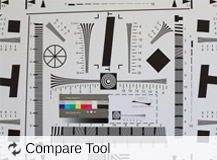


Apple iPhone 6s Plus in our photo compare tool
The iPhone can now shoot 4K video
Thanks to the higher-resolution sensor the new iPhone 6s Plus is now capable of recording 2160p videos at 30 frames in addition to 1080p capturing at 30 and 60 fps. There is a new mode as well - 1080p at 120 fps for slow motion purposes, in addition to the 720p at 240 fps low-mo videos. Naturally, there is a time-lapse option as well.The camcorder UI is as simple as it can get, offering nothing but the flash setting. You can find the resolution switch in the Settings menu instead of having a shortcut in the viewfinder. True, it's a one-time switch for most users once you choose your preferred resolution but having it handy in the camera app is the more natural solution.
An interesting point is that our 64GB version came with 4K enabled by default, and we've heard that 16GB models are set to 1080p out of the box - a very intriguing way for Apple to address the inadequacy of the mere existence of a 16GB base model.
The 4K videos carry a bitrate of around 51Mbps, but audio is subpar recorded in mono at 81Kbps in AAC format. The 1080p videos at 30 fps have a bitrate of 17.6 Mbps, keeping the same audio, while the 60fps ones came out with 26Mbps bitrate.
The 4K videos are slightly less processed than still images - there is some noise, but less over-sharpening while the detail is decent if not quite class leading. Dynamic range is once again impressive and the frame rate is pretty steady, but the mono audio is disappointing.
Final words
Just like its more compact cousin, the iPhone 6s Plus brings superior imaging, 3D Touch, a beast of a chipset and double the RAM and those surely make it a worthy upgrade. Plus, the screen size and resolution help Apple compete in a segment clearly dominated by Android.The iPhone had been stuck on 8MP since the 4s and meaningful strides in the camera department were long overdue. So, the 6s generation has finally made it into double-digits. It's just that the new 12MP shooter isn't the ultimate in smartphone imaging, with or without OIS.
This new camera can now record 4K videos too. Setting aside the fact that it's been the flagship standard for about 2 years, the iPhone 6s Plus fares better on that front with high levels of detail and wide dynamic range. Just make sure you don't do anything stupid by getting a base 16GB model - 3 minutes of 4K video go past the one gig mark and you'd want to have some apps on that phone too.
 Giving credit where it's due, the A9 chip is a monster. Per-core
performance is unmatched, GPU scores are off the charts, and the 2GB of
RAM help deliver a blazing fast experience whether you're shuffling
screens or playing elaborate games.
Giving credit where it's due, the A9 chip is a monster. Per-core
performance is unmatched, GPU scores are off the charts, and the 2GB of
RAM help deliver a blazing fast experience whether you're shuffling
screens or playing elaborate games.The culprit behind the added heft this year, 3D Touch, is just cool. Which is to say, it's interesting, novel and has potential, but will take some time to reach maturity and wide adoption. Perhaps with the iPhone 7 and on, there will be a diverse app base turning it into yet another feature we take for granted.
Apple iPhone 6s Plus key test findings:
- Ever so remarkably well built, the iPhone 6s Plus isn't just big now, but also heavy. On the positive side it's made out of a much sturdier aluminum alloy so there's no room Bendgate this year.
- The 5.5-inch display is not as bright as last year's, but the deep blacks and superb contrast will make you forget about that. Sunlight legibility is outstanding too.
- Excellent battery life - endurance rating of 85 hours, web browsing and video playback show improvements over the predecessor, but the voice call score is only average.
- The connectivity is improved with Cat.6 LTE support, but the NFC is still Apple Pay limited. Wireless charging could have been useful, but is still not an option.
- The 3D Touch paves the way for developers to come up with new ways of interaction with the phone. It's genuinely useful at times, but has a long way to go before it becomes an integral part of the experience.
- The A9 chip is a stellar performer. Single-core CPU output and GPU performance are unrivaled at this point in time.
- Loudspeaker only managed a Below Average rating in our tests.
- The audio quality is good, but not quite the best in the class.
- The output of the 12MP camera is generally good, but fails to match our expectations and Apple's PR talk (and what the best competition is capturing too).
- Panoramas are simply splendid.
- Detailed 4K videos have very good dynamic range.
- The 5MP front-facing camera creates nice images, Retina flash is useful in extreme darkness and short distance.
- The iOS 9 is an incremental upgrade and brings just a few novelties, but improves the overall experience by smart suggestions and more intelligent behavior of the most used apps and Siri. Split screen multi-tasking however is reserved to the iPad.
If you've skipped the 6 Plus though, and you're finally ready to move into phablets from your 2-year-old 5s, the benefits are there. For the $100/100E more you'd spend on the 6s Plus over the 6 Plus, you'd get an overall superior device with hardware that will remain relevant a lot longer.
Clearly, the Plus series are Apple's extra line of defense. There're iPhone users who wouldn't even bother looking for an alternative - whether it's the consistently positive experience or the investment in the ecosystem, or both. But if the idea of more screen real estate should cross anyone's mind, the first option to even think about would simply be a bigger iPhone.
Even better if some Android converts can be taken onboard in the process. Here's the catch though, Android flagships keep on pushing the specs. The Samsung Galaxy S6 edge+ is on top of that list and gives you a larger 5.7-inch QHD display in a smaller and much lighter body - if weight is important to you go to a store, hold both, and feel for yourself what we mean. The S6 edge+ will give you better photos too, and Samsung Pay, if you're into that.
Depending on where you are in the world a 64GB version could be either cheaper or more expensive than the iPhone 6s Plus, go figure. But then you can get a usable 32GB variant of the S6 edge+ for less, an option you don't get with the 6s Plus.
And if you're willing to be a little less extravagant, there's always the Note5 - essentially the same hardware as the S6 edge+, but easier on your pocket. This one comes with an S Pen and should be cheaper than an iPhone 6s Plus no matter the region, provided it's available at all (wink, Europe).
The new Nexus line is just out and the Nexus 6P is a worthy contender. It is virtually the same size physically, but lighter, and with a larger 5.7-inch display at that. The Huawei-made smartphone has a 12.3MP sensor, a fingerprint reader on the back and the latest Android OS.
We're yet to see a production Sony Xperia Z5 Premium but from the early prototype we got to play with, it's a very promising premium smartphone. You get, well, premium build, reminiscent of older glass-backed iPhones, and a 5.5-inch display of 4K resolution, a first on a smartphone.
Judging by pre-order prices, the Z5 Premium might actually be cheaper than the iPhone 6s Plus, though again, hardly a decider in this segment. You will need to wait for this one, while the iPhone 6s Plus is available now. Alternatively, you can go for the plain Z5, and enjoy most of the benefits of the Premium, save for the 4K display, for an even lower price.
You can mix and match LG G4 and the LG G Flex2, get both, have money to spare and still show off an eye-catching device with top-notch hardware. Each will give you microSD expansion, and a laser-assisted camera with more resolution, and perhaps better image quality than the iPhone 6s Plus. The LG G4 has the added benefit of a replaceable battery, if you like that sort of thing.
OK, we know this isn't quite how it works but in theory you can get two fine flagships cheaper than an iPhone 6s Plus. Consider Apple's expensive storage upgrades and things look even worse. In theory, phablets is where Apple is falling even further behind its competition.
In practice, the iPhone 6s Plus is topping the performance charts and its battery backup is no worse than that of the main rivals. Is Apple doing the right things while the others are trying too hard? It's not that simple. But Apple makes it look so.
Subscribe to:
Post Comments
(
Atom
)


































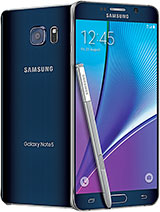
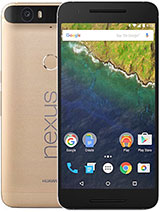
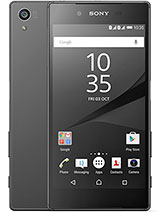

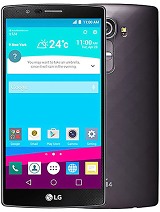
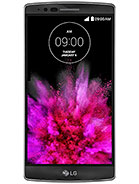




Nice Post …………keep posting!!
ReplyDeletePaperweights
The web site is lovingly serviced and saved as much as date. So it should be, thanks for sharing this with us. iphone x cases
ReplyDelete